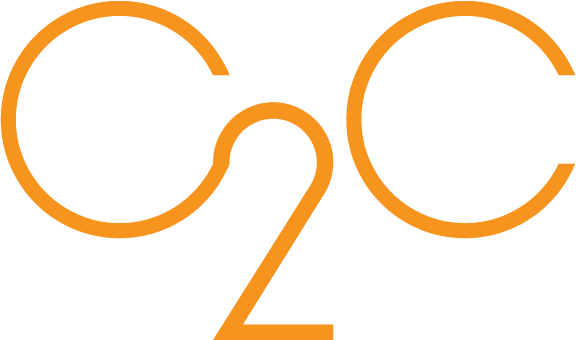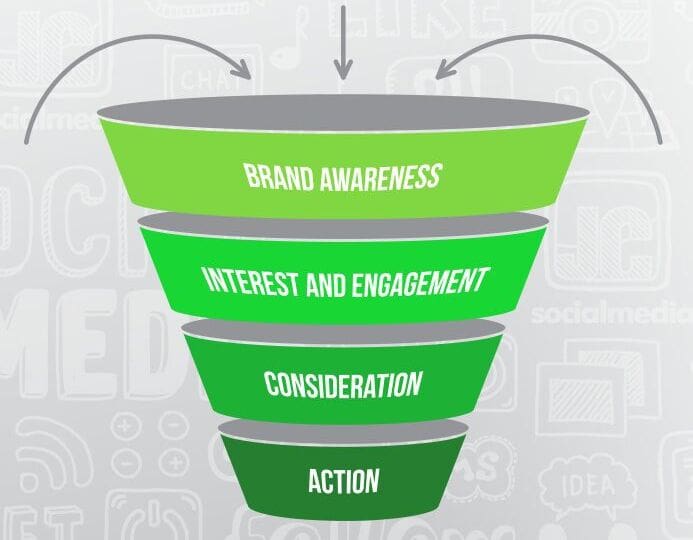One of the most fundamental principles in digital marketing is the marketing funnel. The “marketing funnel” refers to the buyer’s journey as a business leads its customer from awareness to purchase. This visual helps to understand better consumer behavior to send appropriate messaging and optimize conversion.
Where does social media fit within the marketing funnel?
Although there have been attempts to modify the funnel over time to adjust to the latest technology, the core principles have remained the same.
This post will look at how social media applies to the marketing funnel and how implementing it into a marketing strategy can be powerful in today’s digital world.
Social Media and the Marketing Funnel
Social media marketing has evolved quickly into a fantastic business tactic. SMM (Social Media Marketing) once was considered an awareness tool that only appeared at the top of the funnel. Now we see that social media has the power to influence consumers in all stages of the funnel. Let’s take a closer look at each step of the marketing funnel and how social media ties in.
The Four Stages of the Funnel
The core stages of the traditional marketing funnel consist of 3 primary segments:
- Awareness
- Consideration
- Conversion
You’ll notice our funnel has an additional segment. We’ve split the consideration funnel into two: interest and engagement and consideration. Also, the final stage of the funnel, “conversion,” has been replaced with “action.”
Image via jcsocialmedia.com
Stage 1: Brand Awareness
At the very top of the funnel is brand awareness, where a brand first catches potential consumers’ attention. In this stage, the consumer learns about the existing solution, product, or service. The type of content people are looking to consume in the awareness stage includes answers, resources, blogs, educational content, research data, opinions, and insight.
Virtually every social network is another opportunity to get a brand’s content in front of new eyes. We recommend utilizing brand awareness ads on Facebook to reach your ideal target audience. This stage can be measured through impressions and reach.
Stage 2: Engagement and Interest
Once someone is made aware of the brand, they move along the funnel into engagement and interest. As a marketer, this is where you nurture leads by building a relationship and establishing trust.
Social media allows consumers to sit in between initial brand awareness and more serious consideration. Being aware of a brand and showing interest in a brand by engaging is very different.
At this stage, the consumer is actively looking for a solution to their problem. Stage two is where the business can position itself as a helpful industry expert. Do some keyword research to figure out what your audience is searching for and create content around that. In the keyword search example below, we used the free keyword tool, WordStream. Web traffic may increase as consumers are searching. We can measure the engagement stage through likes, clicks, and shares.
Stage 3: Consideration
Stage 3 of the funnel, consideration, is closely represented by the decision-making stage. Consideration is where we transition audience members into making a purchase. In stage three, the consumer is past search and is now eliminating those choices that aren’t a good fit. This is how we use Social media to influence consumers’ decisions.
Tactics to implement during this stage include sharing content like testimonials and reviews with your engaged audience. Additionally, creating urgency by offering a limited-time offer, free shipping, or special to urge consumers to that final action stage.
Traffic to specific landing pages or product pages is relevant in this stage. Messaging may become more sale-oriented with clear calls to action.
Stage 4: Action
Action is the final step where a consumer becomes a customer. ‘Action’ includes several outcomes. Stage four can be an online purchase, an inquiry form completion, or booking a meeting.
Although this essentially is the end of the marketing funnel, the consumer journey is not quite complete. The “Action’ stage is for both the consumer and the marketer. Now it’s time to focus on customer retention and turning that one purchase into 10, 10 into 100, and so on.
An Effective Social Media Marketing Funnel Example
To create a better understanding of the social media marketing funnel, let’s look at an example. Let’s use “Arizona Smilez,” an orthodontic practice, as an example.
Awareness: To bring awareness to the practice’s surrounding community, our client Sonoran Smile Orthodontics let us build a dynamic Facebook Ad campaign. We created a 15-mile radius around the practice and targeted moms ages 25 to 55 with children between 8 and 18. The purpose of detailed targeting is to reach your ideal audience, so make it as specific as possible. The ad consists of a picture of a smiling teen with the text, “Give Your Child a Beautiful Smile that Will Last a Lifetime.”
Pro Tip: In this phase, you can experiment with testing variables such as creativity, audience, and placement. This is called Facebook A/B Testing.
Engagement and Interest: Sonoran Smile focuses on nurturing its engaged audience in the engagement and interest phase. With a quick search of “braces” on GoogleTrends, we discovered that “how to know if you need braces” has been searched 150% times more in the past year. So Sonoran Smile created a blog post around this topic and distributed it on their social media, linking back to their website.
Consideration: Arizona Smilez creates a limited-time offer to urge consumers to that final action stage. They post on their social media that they’re offering $500 off orthodontic treatment as a new patient special during summer break. In the post, they include buzz words like “act now” and “don’t miss out.” The post links consumers to the consultation request form on the Arizona Smilez website. They measure the success of the offer by the traffic on the request form landing page.
Action: During the final stage for Sonoran Smile, we measure the number of consultations booked. We cannot purchase braces online, so the purpose of our social media marketing funnel was to lead new patients to book a consultation.
Facebook Advertising
Facebook advertising is a great place to start with implementing social media into the marketing funnel. JC Social Media states, “Facebook advertising is a perfect example of how we can use social media throughout the customer journey.” Facebook’s ad platform is designed around the buyer’s journey and selects a marketing objective based on the marketing funnel stages.
Final Words
While social media remains a powerful and effective tool in today’s digital market, the social media marketing funnel is applicable. Following the funnel allows marketers to influence consumers at each stage during the buyer’s journey. It’s the marketers’ job to give consumers the fuel to move along the funnel toward an action.
Please give us some feedback and tell us what you would like to see in our next publication.
This post was inspired by JC Social Media, “The Social Media Marketing Funnel.”
Concept2Completion is a full-service branding and marketing agency. We provide free social media and web audits. Please reach out to us at concept@2completion.com and let us know you saw this post. We will send you a custom report.


0 Comments